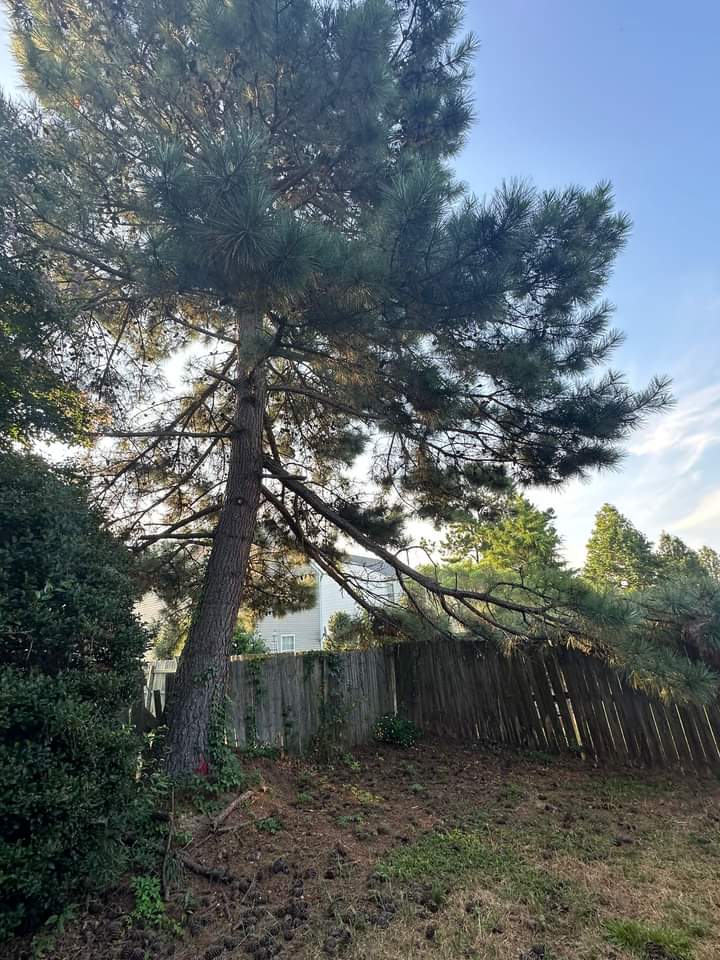
When a storm hits Burlington, WA, residents are no strangers to unpredictable weather, especially with lightning strikes threatening the tall, towering trees that dot the landscape. Imagine waking up to find a massive tree lying in your yard, or worse, on your roof. A question quickly comes to mind: Does homeowners insurance cover tree removal after lightning strikes in Skagit County?
Dealing with storm damage can be stressful, especially when you’re trying to figure out what your insurance will and won’t cover. Lightning can cause serious damage, from splitting trees to sending large branches crashing into homes or blocking your driveway. Knowing whether your insurance policy includes tree removal coverage after such an incident is crucial to protecting your property. In this guide, we’ll explore the ins and outs of homeowners insurance, what it covers, and what steps you should take after a lightning strike in places like Burlington, Mount Vernon, and the greater Skagit County area.
Understanding your insurance policy is the first step in managing the aftermath of a storm, so let’s break it down and answer all your questions about tree removal and storm-related coverage.
What Does Homeowners Insurance Typically Cover?
Coverage for Tree Removal After a Lightning Strike
In most cases, your homeowners insurance will cover tree removal, but only under certain conditions. If lightning strikes a tree, and that tree damages your house, garage, fence, or another insured structure, your policy will likely pay for the cost of removing the tree and repairing the damage. This is considered part of the “property damage” coverage.
For example, if a tree falls on your roof, collapses a section of your fence, or damages your garage, your homeowners insurance should cover both the removal of the tree and the repairs to the damaged property. This coverage extends to insured structures on your property, so if your car is damaged while parked in your driveway, that might also be covered under a different part of your policy.
However, if the tree falls but doesn’t cause any damage to insured structures, your insurance might not pay for its removal. In such cases, homeowners may need to explore professional services like nearby tree trimming in Skagit County to manage fallen or hazardous trees efficiently.
What Happens If the Tree Falls Without Damaging Anything?
If the lightning-struck tree falls but doesn’t hit any of your insured structures, your policy may not cover the cost of removing the tree. For example, if a large tree falls in the middle of your yard, even if it’s blocking your driveway or laying across your garden, most standard homeowners insurance policies won’t provide coverage for removal.In such cases, it’s wise to consult with tree removal experts to assess the situation and determine the safest way to handle the fallen tree.
In some cases, though, policies may include debris removal coverage for trees that fall and block access to your home, driveway, or public roadways. However, this coverage is typically limited, and you should review your policy carefully to see if this applies.
Skagit County’s Unique Weather and Risks
Residents in Burlington, Mount Vernon, and other parts of Skagit County are no strangers to stormy weather. The mix of coastal and inland climates creates unpredictable storm patterns, and while lightning strikes aren’t everyday occurrences, they do happen. Homeowners often ask, ‘Does homeowners insurance cover tree removal after a storm in Burlington, WA?’ Another common concern is who is responsible for fallen tree removal, as liability can depend on property lines and local regulations. Especially for homes near large, older trees—like those in neighborhoods close to Bay View State Park, Samish Island, or the Skagit River—the risk is higher during these storms.
Lightning doesn’t just bring trees down—it can also cause hidden internal damage. A tree might appear intact but could be dangerously weakened or even burned from the inside. If you’re unsure whether a tree is still safe, learning how to tell if a tree is dead or not can help you spot the warning signs early, such as split bark, deep cracks, or blackened branches.
What Steps Should You Take After a Lightning Strike?
If a lightning strike damages a tree on your property, here’s what you need to do:
1. Check for Immediate Damage
First, check whether the tree has damaged any part of your home or other insured structures. Did the tree hit your roof? Your garage? Your fence? Take pictures and videos from different angles, as this will be useful when filing a claim with your insurance company.
If you’re in Burlington Hill or Cascade Ridge—areas with dense trees—you might also want to check your entire property for other damage caused by the storm.
2. Call Your Insurance Company
Once you’ve assessed the situation, call your insurance provider to report the damage. Explain the situation, and be ready to provide photos and videos. They may send an adjuster to evaluate the damage in person.
Be specific about what the tree has damaged, as this will affect whether or not your insurance covers the removal.
3. Hire a Licensed Tree Removal Service
After contacting your insurance company, it’s time to call in the professionals to safely remove the tree. If your policy covers the damage, your insurance company may recommend local contractors, or you can choose a trusted local tree services like Baxter’s Tree Service, which operates right here in Burlington, WA.
Baxter’s Tree Service has experience in handling storm-related tree removal, especially cases involving insurance claims. Our local knowledge of Burlington and Skagit County ensures that we can navigate tricky removals safely and efficiently.



What Are the Costs of Tree Removal?
Tree removal costs in Burlington and across Skagit County can vary widely based on the size of the tree and the complexity of the removal. A small tree in an open yard might cost a few hundred dollars to remove, while a large tree close to your home, power lines, or other structures could cost upwards of $1,500 to $3,000. These costs can rise if special equipment is needed or if the tree is in a difficult-to-reach location.
Your insurance policy, if it covers tree removal, will typically cover up to a specific dollar amount for this service. Be sure to check your policy’s limits, as some plans have a cap on tree removal expenses—often in the range of $500 to $1,000 per tree. Any costs beyond that limit will need to be covered out of pocket. After removal, you may also want to consider what to plant after tree removal to restore greenery and maintain your landscape’s health.
Does Your Policy Include Preventative Coverage?
An important point to consider: homeowners insurance generally does not cover the removal of healthy trees that are still standing but could pose a threat in the future. This means that even if you know a tree on your property is at risk of falling during the next storm, your insurance won’t pay to have it removed unless it has already fallen or caused damage.
That’s why it’s a good idea to inspect and trim trees on your property regularly, especially if they’re close to your house or garage. If you live near wooded areas like Bay View or Padilla Bay, or along the tree-lined streets of Mount Vernon, consider investing in routine tree care and maintenance. Proactive pruning or removal of at-risk trees can help prevent a much larger, more expensive problem down the road.
Final Thoughts: Be Prepared for the Unexpected
Living in Burlington, Mount Vernon, or elsewhere in Skagit County, you’re familiar with our unique weather patterns and the risk of storms. While you can’t predict when lightning will strike, you can take steps to protect your property by knowing what’s covered by your homeowners insurance and staying proactive with tree maintenance.
To answer the core question: Does homeowners insurance cover tree removal after lightning strikes? The answer is yes, but only under specific circumstances. If the tree has caused damage to an insured structure, your insurance will likely help with both removal and repairs. If the tree simply falls in your yard without causing damage, you may be left covering the costs yourself—unless your policy includes some form of debris removal coverage.
In any case, it’s important to review your homeowners insurance policy carefully and consult with your insurance provider to understand exactly what’s covered. When in doubt, reach out to your local experts at Baxter’s Tree Service. We’re here to help you handle tree removal safely and efficiently after a lightning strike or any storm-related event.
FAQ’s
Does Homeowners Insurance Cover Tree Removal After Lightning Strikes in Skagit County?
Yes, if a lightning strike causes a tree to fall and damage your home or other insured structures in Skagit County, your homeowners insurance typically covers both the tree removal and repairs.
How Much Does Tree Insurance Pay for Tree Removal In Burlington WA?
Most homeowners insurance policies cover up to $500 to $1,000 for tree removal, depending on your policy. Check with your insurer for specific coverage limits.
Are Trees Covered by Insurance?
Trees are not covered as standalone items, but if a tree damages insured structures on your property, your homeowners insurance usually covers the removal and repair costs.

